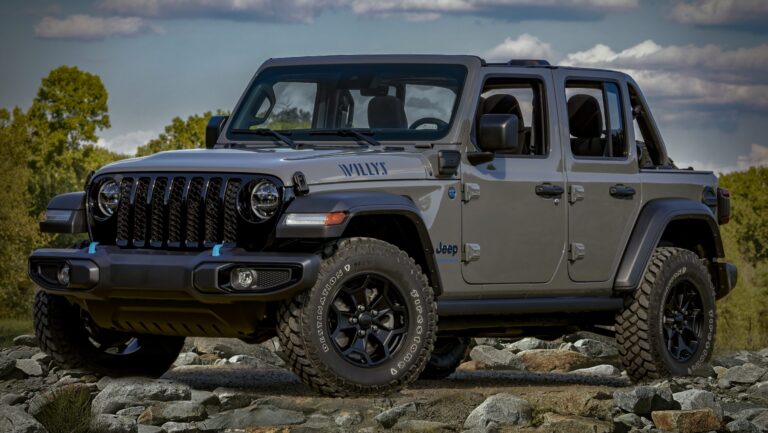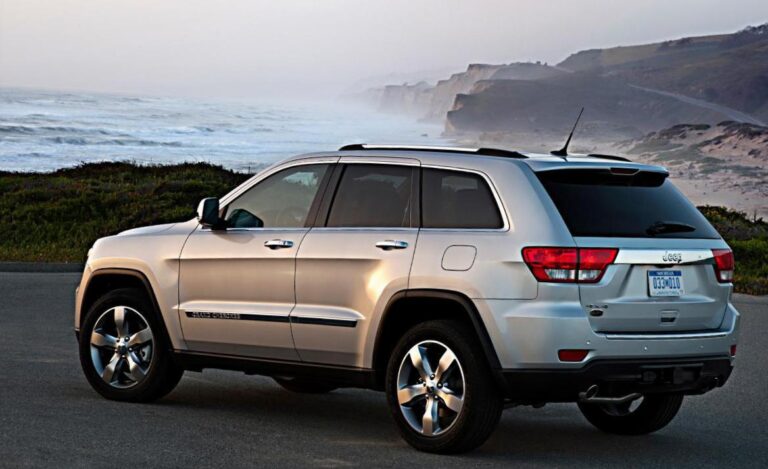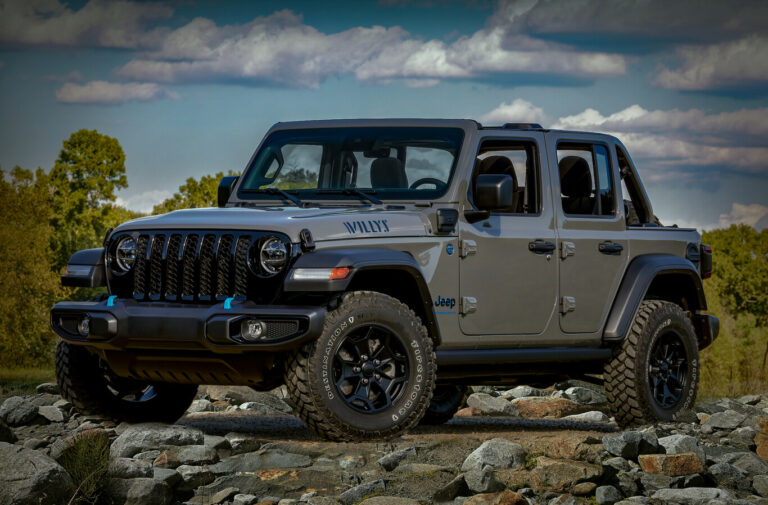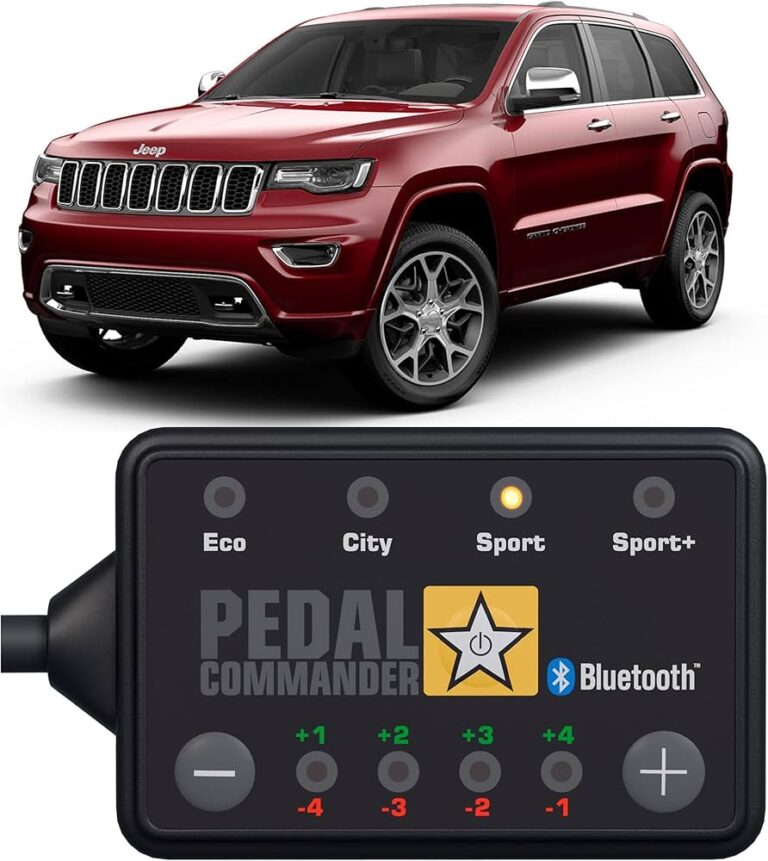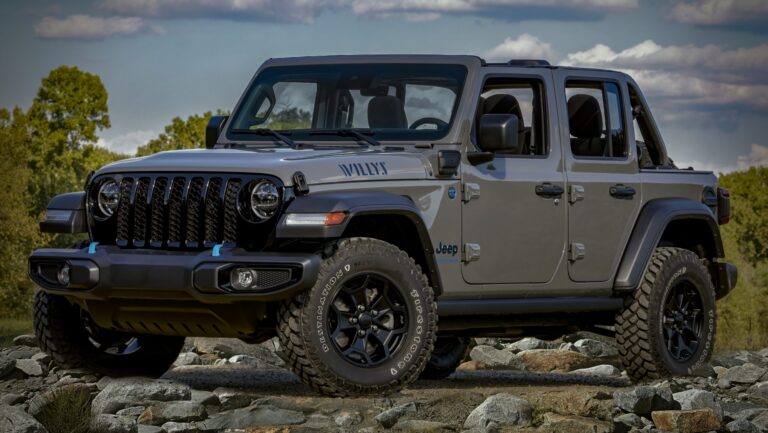2004 To 2009 Jeep Grand Cherokee SRT For Sale: A Comprehensive Buyer’s Guide
2004 To 2009 Jeep Grand Cherokee SRT For Sale: A Comprehensive Buyer’s Guide jeeps.truckstrend.com
In the realm of performance vehicles, certain machines carve out a unique niche, blending seemingly contradictory attributes into a compelling package. The Jeep Grand Cherokee SRT (specifically the WK generation, produced from 2006 to 2009 as an SRT model) is one such beast. It’s an SUV that defies convention, offering the practicality of a family hauler combined with the heart-stopping acceleration and raw power typically reserved for sports cars. For those seeking an adrenaline rush with ample cargo space, the WK Grand Cherokee SRT – often referred to as the SRT8 – remains an incredibly appealing option on the used market. This article serves as a comprehensive guide for anyone considering purchasing one of these iconic American performance SUVs.
The Legend of the WK SRT8: History and Legacy
2004 To 2009 Jeep Grand Cherokee SRT For Sale: A Comprehensive Buyer’s Guide
The story of the Jeep Grand Cherokee SRT begins with Chrysler’s Street and Racing Technology (SRT) division. Formed to develop high-performance versions of Dodge, Chrysler, and Jeep vehicles, SRT quickly gained a reputation for stuffing massive engines into unlikely platforms. The Grand Cherokee SRT8, introduced for the 2006 model year, was a prime example of this philosophy.
While the standard WK Grand Cherokee debuted in 2005, the SRT8 variant arrived a year later, instantly grabbing headlines. It wasn’t just a trim level; it was a complete re-engineering. Gone was the focus on off-road prowess, replaced by a laser-sharp dedication to on-road performance. This was Jeep’s answer to European performance SUVs like the Porsche Cayenne Turbo and BMW X5 4.8is, but with a distinctly American, no-nonsense attitude and a more accessible price tag. The SRT8 continued production through the 2009 model year, making the 2006-2009 models the true WK SRT8 generation.
At its core, the WK SRT8 was powered by the magnificent 6.1-liter HEMI V8 engine, producing a formidable 420 horsepower and 420 lb-ft of torque. This power was channeled through a robust five-speed automatic transmission (W5A580) and a unique Quadra-Trac SRT all-wheel-drive system designed to put power to the pavement, not climb mountains. Brembo brakes, a lowered and stiffened suspension, and aggressive styling cues completed the transformation, creating a vehicle capable of 0-60 mph sprints in under five seconds – a staggering feat for an SUV of its size and weight at the time.
Why Buy a WK Grand Cherokee SRT8 Today?
Despite being over a decade old, the 2006-2009 Jeep Grand Cherokee SRT8 holds significant appeal in the used car market for several compelling reasons:
- Unmatched Performance for the Price: You’d be hard-pressed to find a vehicle with this level of acceleration, V8 rumble, and practical utility for the price of a used SRT8. It still feels incredibly potent even by modern standards.
- Practicality and Versatility: It’s still a Grand Cherokee at heart, meaning comfortable seating for five, ample cargo space, and the ability to tow. It’s a true wolf in sheep’s clothing, capable of school runs during the week and thrilling drives on the weekend.
- Exclusivity and Collector Potential: These were not mass-produced vehicles. Their limited production numbers and unique position in Jeep’s history make them somewhat exclusive. Well-maintained, low-mileage examples are already starting to appreciate in value.
- The HEMI Sound: There’s simply no substitute for the roar of a naturally aspirated HEMI V8. The SRT8’s exhaust note is intoxicating and addictive.
- Customization Potential: The aftermarket for these vehicles is strong, offering numerous options for performance upgrades (superchargers, headers, tunes) and aesthetic enhancements.

Key Features and Specifications (2006-2009 SRT8)
Understanding the core components of the WK SRT8 is crucial for potential buyers:
- Engine: 6.1L (370 cu in) HEMI V8
- Horsepower: 420 hp @ 6,200 rpm
- Torque: 420 lb-ft @ 4,800 rpm

- Transmission: Mercedes-Benz W5A580 (NAG1) 5-speed automatic
- Drivetrain: Quadra-Trac SRT active full-time all-wheel drive system with a limited-slip rear differential. No low range.
- Brakes: Brembo 4-piston calipers front and rear, with 14.2-inch vented front rotors and 13.8-inch vented rear rotors.
- Suspension: Independent short-long arm (SLA) front and multi-link rear suspension, specially tuned with Bilstein dampers, stiffer springs, and larger anti-roll bars. Lowered ride height (1 inch front, 1.5 inches rear compared to standard WK).
- Wheels & Tires: 20-inch forged aluminum wheels (9-inch front, 10-inch rear) with Goodyear Eagle F1 run-flat tires (255/45R20 front, 285/40R20 rear).
- Performance:
- 0-60 mph: 4.6-4.8 seconds (manufacturer claims)
- Quarter Mile: ~13.2-13.4 seconds
- Top Speed: 155 mph (electronically limited)
- Exterior: Unique front and rear fascias, functional hood scoop, body-color side sills, dual chrome exhaust tips, SRT badging.
- Interior: Sport bucket seats with SRT embroidery, carbon fiber or aluminum trim accents, specific gauge cluster with 180 mph speedometer, SRT steering wheel.
What to Look For When Buying (Buyer’s Guide)
Purchasing a high-performance vehicle like the SRT8 requires diligence. Here’s a detailed checklist of what to inspect:
- Maintenance Records are Paramount: This is arguably the most critical factor. Look for a complete service history, especially for oil changes (using correct synthetic oil), transmission fluid changes, differential fluid changes, and brake service. Neglected maintenance will lead to expensive repairs.
- Engine Health:
- Cold Start: Listen for any knocking, ticking (especially valvetrain noise/lifters), or excessive smoke. A faint tick on a cold start that goes away quickly can be normal, but persistent noise is a red flag.
- Oil Leaks: Check under the vehicle for oil stains. Common areas include valve covers, oil pan, and rear main seal.
- Exhaust Smoke: Blue smoke indicates oil burning, white smoke (not just cold start condensation) could be coolant, and black smoke indicates a rich fuel mixture.
- Transmission:
- Shifts: During a test drive, pay close attention to the transmission. Shifts should be smooth and firm, not harsh, delayed, or clunky. Check for proper engagement in all gears, including reverse.
- Fluid: Check the transmission fluid level and color (if possible). It should be reddish-pink and not smell burnt.
- Drivetrain (AWD System & Differentials):
- Noises: Listen for clunking, whining, or grinding noises from the differentials, especially during turns or under acceleration.
- Limited-Slip Differential (LSD): The rear LSD requires specific friction modifier fluid. If it wasn’t serviced correctly, it can chatter or fail.
- Prop Shaft/CV Joints: Check for torn boots or excessive play.
- Brakes:
- Rotor & Pad Wear: Brembo brakes are expensive to replace. Check the thickness of the rotors for excessive wear (lips on the edges) and the remaining pad life.
- Brake Feel: Pedal should be firm, not spongy. Listen for squealing or grinding noises.
- Suspension:
- Shocks/Struts: Look for leaks from the Bilstein dampers.
- Bushings: Inspect all suspension bushings (control arms, sway bars) for cracks or deterioration.
- Tires: Due to their size and the vehicle’s power, tires wear quickly and are expensive. Check tread depth and for uneven wear, which could indicate alignment issues or worn suspension components.
- Rust: Check common rust spots, especially in colder climates: rocker panels, wheel wells, subframe, and suspension mounting points.
- Electrical System: Test all lights, power windows, sunroof, infotainment system, climate control, and dashboard warning lights.
- Interior Condition: Inspect seats for rips, tears, or excessive wear. Check the steering wheel, dashboard, and door panels for damage or sun fading. Ensure all interior electronics work.
- Modifications: Be wary of heavily modified vehicles unless they come with extensive documentation of professional installation and tuning. Supercharged examples can be powerful but also pose higher risks if not properly maintained.
Ownership Costs and Considerations
Owning a WK Grand Cherokee SRT8 isn’t cheap, and prospective buyers should factor in these ongoing costs:
- Fuel Economy: It’s abysmal. Expect single-digit city MPG and low teens on the highway. This is a V8 designed for performance, not efficiency.
- Insurance: Can be high due to the vehicle’s performance nature and replacement cost.
- Tires: Large, high-performance tires are expensive and wear quickly, especially if you enjoy using the HEMI’s power.
- Brakes: Brembo brake components are premium-priced.
- Parts Availability & Cost: While many parts are shared with other WK Grand Cherokees, SRT-specific components (engine parts, suspension, body panels) can be pricier and sometimes require special ordering.
- Maintenance: More frequent and specialized maintenance is required compared to a regular SUV. Finding a mechanic familiar with SRT vehicles is a plus.
Finding a WK SRT8 For Sale
- Online Marketplaces: AutoTrader, Cars.com, eBay Motors, Craigslist (with caution).
- Enthusiast Forums: SRT-specific forums (e.g., "JeepGarage.org" or "SRTforums.com") often have classified sections where owners sell their well-maintained vehicles. This is a great place to find knowledgeable sellers.
- Specialty Dealerships: Some dealerships specialize in performance or classic vehicles and might have an SRT8 in stock, though prices might be higher.
- Private Sellers: Often offer the best value, but require more due diligence from the buyer.
Practical Advice: Always get a Pre-Purchase Inspection (PPI) from an independent mechanic familiar with SRT vehicles or high-performance Mopar products. A clean CarFax/AutoCheck report is a good start, but it doesn’t replace a thorough physical inspection. Don’t rush the purchase; wait for the right car to come along.
Pricing Guide: 2006-2009 Jeep Grand Cherokee SRT8
The price of a used WK Grand Cherokee SRT8 can vary significantly based on year, mileage, condition, maintenance history, modifications, and geographical location. The table below provides a general estimate for models available for sale. Remember, exceptionally clean, low-mileage examples will command a premium.
| Model Year | Condition | Mileage Range (Approx.) | Estimated Price Range (USD) | Key Considerations |
|---|---|---|---|---|
| 2006-2007 | Fair | 150,000+ | $10,000 – $15,000 | Higher mileage, likely needs significant maintenance/repairs. Good project car. |
| 2006-2007 | Good | 100,000 – 150,000 | $15,000 – $20,000 | Well-maintained examples in this range offer good value. Inspect carefully. |
| 2008-2009 | Fair | 150,000+ | $12,000 – $17,000 | Similar to earlier years, but potentially slightly better interior/features. |
| 2008-2009 | Good | 100,000 – 150,000 | $17,000 – $22,000 | Strong contenders for daily drivers or enthusiasts. Focus on maintenance. |
| 2006-2009 | Excellent | 50,000 – 100,000 | $22,000 – $28,000+ | Lower mileage, well-cared-for examples. Often enthusiast-owned. |
| 2006-2009 | Pristine | < 50,000 | $28,000 – $35,000+ | Collector-grade examples, rare to find, usually highly original. |
Note: Prices are estimates and can fluctuate based on market demand and specific vehicle details. Always verify pricing with current listings.
Frequently Asked Questions (FAQ)
Q: What’s the difference between a regular Grand Cherokee and an SRT8?
A: The SRT8 is a completely different beast. While it shares the Grand Cherokee body shell, it features a much larger 6.1L HEMI V8 engine, performance-tuned suspension, Brembo brakes, a unique full-time AWD system (no low range for off-roading), and distinctive exterior and interior styling. It’s built for on-road performance, not off-road capability.
Q: Is the SRT8 good for daily driving?
A: Yes, it can be. It offers comfortable seating, ample space, and a commanding driving position. However, be prepared for poor fuel economy, a firm ride, and higher maintenance costs compared to a standard SUV.
Q: How much does it cost to maintain an SRT8?
A: Maintenance costs are higher than a regular Grand Cherokee. Expect to pay more for premium fuel, larger and more expensive tires, pricier brake components, and specialized fluids for the drivetrain. Routine maintenance is crucial to prevent larger issues.
Q: Can I take it off-roading?
A: No. The SRT8 is purpose-built for on-road performance. Its lowered suspension, street-biased tires, and lack of a low-range transfer case make it unsuitable for anything beyond light gravel roads. Attempting serious off-roading will likely result in damage.
Q: Are parts readily available for the WK SRT8?
A: Most common parts are available through Mopar (Chrysler/Jeep) or the aftermarket. However, some SRT-specific components, especially unique body parts or certain engine internals, may be harder to find or more expensive.
Q: What’s the fuel economy like?
A: Brutal. Expect around 12-14 MPG combined, with single digits in heavy city driving. It requires premium octane fuel.
Q: Is it a reliable car?
A: With proper and consistent maintenance, the WK SRT8 can be a reliable performance SUV. The 6.1L HEMI engine is generally robust, as is the Mercedes-Benz transmission. However, like any high-performance vehicle, neglect can lead to expensive problems. Common issues, if not addressed, can include worn suspension components, brake wear, and potential differential issues if not serviced correctly.
Conclusion
The 2006-2009 Jeep Grand Cherokee SRT8 stands as a testament to American automotive engineering, blending brute force with unexpected practicality. It’s a performance SUV that remains thrilling to drive, commands attention, and offers a unique ownership experience. While not without its considerations in terms of fuel consumption and maintenance, a well-researched and carefully chosen WK SRT8 can be an incredibly rewarding purchase for the enthusiast who craves V8 power and SUV versatility. If you’re looking for a vehicle that truly embodies the "performance utility" concept, the Grand Cherokee SRT8 from this era is a compelling, and increasingly iconic, choice.


